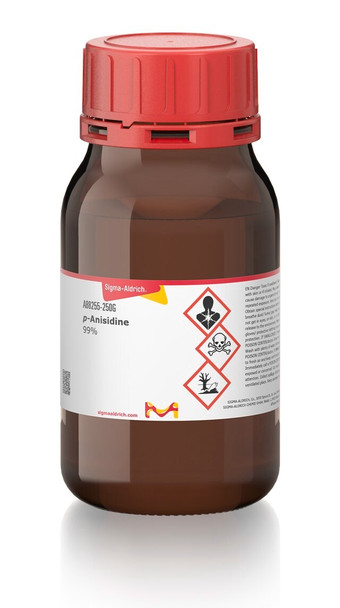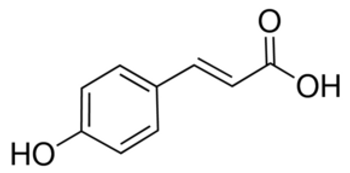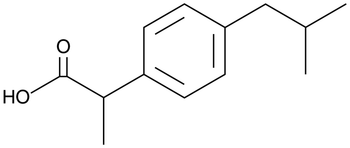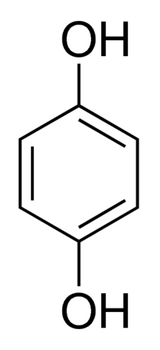Description
p-Anisidine, 99%, 5G
Synonym(s):
4-Aminoanisole, 4-Methoxyaniline
Linear Formula:
CH3OC6H4NH2
CAS Number:
104-94-9
Molecular Weight:
123.15
Beilstein:
471556
MDL number:
MFCD00007864
PubChem Substance ID:
24891372
NACRES:
NA.22
PROPERTIES
Quality Level
200
Assay
99%
form
solid
autoignition temp.
959 °F
bp
240-243 °C (lit.)
mp
56-59 °C (lit.)
SMILES string
COc1ccc(N)cc1
InChI
1S/C7H9NO/c1-9-7-4-2-6(8)3-5-7/h2-5H,8H2,1H3
InChI key
BHAAPTBBJKJZER-UHFFFAOYSA-N
Application
p-Anisidine can undergo aerobic oxidation in the presence of gold catalysts to form aromatic azo compounds.[1]
p-Anisidine can be used:
p-Anisidine can be used:
- In the diastereoselective and enantioselective synthesis of CF3-substituted azoridines catalyzed by a chiral Bronsted acid.[2]
- To prepare 4-organoselenium-quinolines through multi-component Povarov reaction with ethyl glyoxylate and ethynyl(phenyl)selane, catalyzed by Yb(OTf)3.[3]
- As a starting material to synthesize 3-fluoro-6-methoxyquinoline in two steps.[4],
- To prepare N-PMP protected α-aminopropargylphosphonates by reacting with terminal alkynes and diethyl formylphosphonate hydrate using silver(I) triflate as a catalyst.[5]
SAFETY INFORMATION
Signal Word
Danger
Hazard Statements
H300 + H310 + H330 - H350 - H373 - H400
Precautionary Statements
P202 - P260 - P273 - P280 - P302 + P352 + P310 - P304 + P340 + P310
Hazard Classifications
Acute Tox. 1 Dermal - Acute Tox. 2 Inhalation - Acute Tox. 2 Oral - Aquatic Acute 1 - Carc. 1B - STOT RE 2
Storage Class Code
6.1A - Combustible, acute toxic Cat. 1 and 2 / very toxic hazardous materials
WGK
WGK 3
Flash Point(F)
251.6 °F - closed cup
Flash Point(C)
122 °C - closed cup





